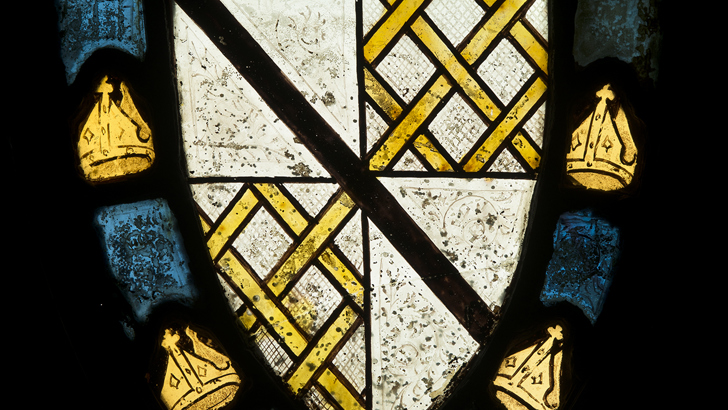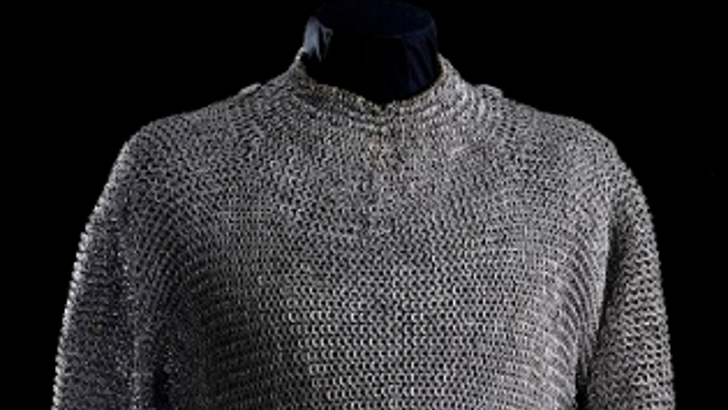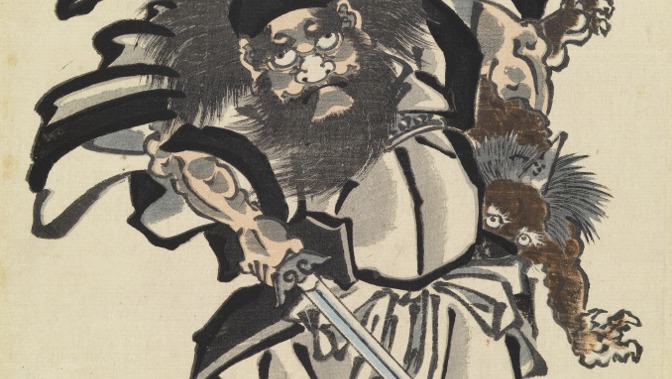The Badge of the Bad Bishop

Sir William and Constance, Lady Burrell’s collection has some outstanding arms and armour and many artworks showing coats of arms or people in armour. In the first of a series of blogs, Glasgow Museums' Curator of Arms and Armour, Ralph Moffat explores some of the collection.
'Usually we think of bishops as kindly types looking after their flock and doing good deeds for the community. Was this the case in the middle ages? Well, think again.
In the Burrell Collection there is a beautiful piece of stained glass showing a coat of arms. A coat of arms was originally a garment worn over armour so that men in battle would know who was who – its original name is ‘coat armour’. These colours and signs were also painted on shields. From this developed a complex system of imagery and artwork known as ‘heraldry’.
Our stained glass coat of arms has little bishops’ mitres – their distinctive headwear – painted round the edge of the shield. But looming largest of all in the middle is the coat of arms of a very powerful family in medieval England: the Despensers. They were an interesting bunch. One father and son duo, both called Hugh, had benefited from the turmoil of the troubled reign of King Edward II. They got in favour with the king and started to take land and money by devious means. They were so hated by their enemies that the father was hung, drawn and quartered, then beheaded and the remains sent to different corners of the kingdom to be put on show. The same thing happened to Hugh the Younger, but he was paraded on an old nag with his coat of arms displayed upside down. By doing this, all would know that he had not behaved as a chivalrous knight ought to.
Bishop Henry of our stained glass was the grandson of this Hugh. As a younger brother, Henry was destined for a career in the church. This did not stop him from fighting. Armed in his helm and hauberk (mail shirt), he personally led his men in battle against the peasants who were in revolt. According to one contemporary writer, ‘he was incensed by the gall of the scum’ and became a ‘Warrior of Mars’ (the Roman god of war). He ‘ground his teeth like a wild boar’ killing and maiming all that came near with his sword.
He marched with the huge royal army that invaded Scotland and burnt Edinburgh to the ground. A Scottish bishop sent him a challenge to fight in single combat as, he claimed, Bishop Henry ‘took so much delight in feats of arms’. This never took place, but shows the reputation our formidable bishop had gained. He led another army on crusade, not to the Holy Land but to Flanders, in present-day Belgium. The people there had taken the side of the wrong Pope (there were two at this time) so they were fair game to be killed as heretics. Bishop Henry wasn’t killed fighting but died peacefully of old age.
Find out more about the Despenser family in the Froissart Chronicles online here>
The Despenser coat of arms is quite distinct, and you can see similarities with the coat of arms of the modern day Spencer family. Visit their page on Wikipedia>'
Images below:
The Shield of Henry Despenser, Bishop of Norwich, 15th century, made in England, gifted to the City of Glasgow by Sir William and Lady Constance Burrell, 1944. Also pictured in the header
Haubergeon or mail shirt, 14th century, probably made in Germany, previously displayed in Kelvingrove Art Gallery and Museum, from the R.L Scott bequest, 1939.
Glasgow Museums' Curator of Arms and Armour, Ralph Moffat




